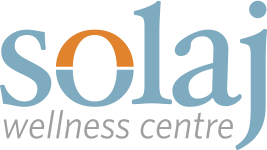Muscle strains, pulls or tears are damage to the muscle or it’s attaching tendon. Healthy muscles can withstand many of our day to day activities, however sudden movements, playing sports or lifting heavy objects are a few examples of how undue pressure can be placed on the tissues and cause damage.
Potential causes of muscle pulls include overloading the muscle or joint, impact from contact sports, overtraining, fatigue, weakness, structural or biomechanical issues, poor muscle coordination, inadequate warm-up or previous injury.
There are varying degrees of muscle strains, from mild (a few fibres) to severe (most fibres or complete tear). Once the muscle sustains such an injury, the body’s natural response is to lay down thick, fibrous scar tissue to help protect the area. As the scar tissue builds up, it actually slows down or even stops fresh blood from reaching the injured area, in turn slowing down the healing process and potentially causing more harm to the tissues. This is why some muscle strains take a long time to heal or sometimes don’t heal at all.
Common Symptoms
- Swelling, bruising or tenderness
- Pain at rest
- Pain while moving the affected muscle or joint related to it
- Weakness of the muscle or inability to use it at all
It is important to know that most cases are very treatable and respond well to alternative therapy. Active release techniques and cold laser therapy are extremely effective at healing these muscle injuries quickly.
Pulled Back Muscle
Pulled Groin Muscle
Pulled Hamstring Muscle
Pulled Calf Muscle
Cold Laser Therapy Pulled Muscle Treatment: Step 1
Cold Laser Therapy Pulled Muscle Treatment: Step 2
Cold Laser Therapy Pulled Muscle Treatment: Step 3
Transfers light energy to the affected cells of muscle, regenerating and strengthening damaged muscle tissue to prevent future injury.
Decreases Inflammation:
Speeds up the body's natural inflammation phase and induces the repair phase of healing.
Removes Internal Scar Tissue:
Inhibits and removes Internal Scar Tissue that naturally forms after an injury and can cause discomfort and a delay in healing.
Nerve Regeneration:
Helps damaged nerves to recover by growing the neural network and repairing vital insulation around the nerve.
Stimulates Blood Flow:
Increases the delivery of oxygen and nutrients required for healing of the affected cells.
Visit our Cold Laser Therapy Page to learn more about how the treatment works.
